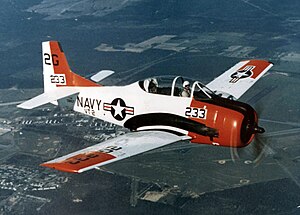In case you're looking for a benchmark for how long is too long between flights, I'm going to say one to two months. The several months that lapse between my own is way too long, and even the latest spell of four is enough to be starting behind the curve.
My travels take me to North Carolina, which holds claim to being the birthplace of powered flight. So when I find myself staying the weekend and the weather is pretty decent, I take the opportunity to get an instructor and get up in the air.
The day started normally enough. The flight school has a fleet of Pipers and Cessnas, and I chose the low-wing Archer. We spent about 30 minutes inside doing the requisite paperwork and running through the POH to check V-speeds, weight and balance, and systems. Then out to the preflight.
We climbed into the cockpit for a little overview of the instrument layout, and then stepped out and gave the plane a once-over before getting into the preflight details.
"What's this?" I ask, pointing to a broken engine cowl latch.

"We're not flying today," the instructor flatly replies.
He putters around the plane, wondering what's going on. We find that all four latches are undone, and that there's an extra 0.1 hour on the engine meter from what's in the paperwork. We suspect someone is in the middle of some maintenance and testing, but it's not on the books, and the school owner is out of town. Regardless, this plane isn't flying.
I say, "Well, I've got no problem flying a 172. I'd rather spend the extra time to get the paperwork re-done and fly." The instructor obliges, and we carry our gear back inside for another go.
The instructor is different than any I've ever flown with. Mostly, I fly with younger guys (yes, from my first flight to the present, they have all been male) who, while dedicated and professional, don't have much on this older gentleman.

An aeronautical engineer, ex-Navy flight instructor with time in all types from radial-engine Trojans to modern jets and thousands of hours to show for it, he's been instructing in some way since 1968. And he brings a completely different perspective to my own flying experience.
Right off the bat, I was set up for a difficult day. Not only have I not flown a 172 since 2012, but we used an 800-foot AGL traffic pattern rather than a more customary (at least by today's standards) 1000-foot pattern.
This might not seem like much, but when you've trained so far for a certain sequence of events at about the same time and place - throttle back, slow down, flaps, turn, check descent rate and airspeed, more flaps... - and then knock 20% off the altitude you have available to do it, things get busy.
So I wasn't too surprised that my first two landings left a bit to be desired. It was difficult to hold airspeed, the timing of my trim adjustments was all off, and my sight picture of the runway on the base-to-final turn was not helping. It was difficult to maintain the glidepath and correct for a light crosswind.
But by the third circuit, the instructor called for a go-around. Not because anything was wrong, but that was part of the practice and my final approach looked good enough to go try some stalls.
Power-off (also called approach to landing) stalls were no problem. But the instructor had me do something a little different. Rather than slow flight with full flaps and right on the edge of the stall, he had me stay at 60 knots with no flaps at first. That's a challenging speed for this plane, as the controls are mushy, but the plane still responds fairly quickly to attitude changes. It showed that I still need to work on setting throttle and trim at the right times as I pass through different speeds.
Power-on stalls are always a bit more challenging, as they need a lot of right rudder to correct for the high power setting, but otherwise the mechanics are similar.
Steep turns were also on the menu today. My turns are acceptable, but I tended to let the nose drop, especially to the right. This is in fact very common across different pilots and airplanes where the pilot sits in the left seat.
Then a mock emergency landing. Again, I need a better feel for the airspeed and trim.
After all the airwork, we came back to give my landings another shot. Though they were better, there was still lots of room for improvement. This was where my instructor's experience gave me some additional insights.
After a few touch-and-gos, we called it a day. But the instructor was happy to spend some time doing a debrief, one much more extensive than any other I've had. He kept notes on all my flying and was able to quantify many of the points I've just glossed over here.
It's too bad my instructor is not a doctor. Then, I'd be able to say that his recommendation to fly again within a few days is a medical necessity.
Oh, and a few bonus photos of my other aviation-related explorations:











